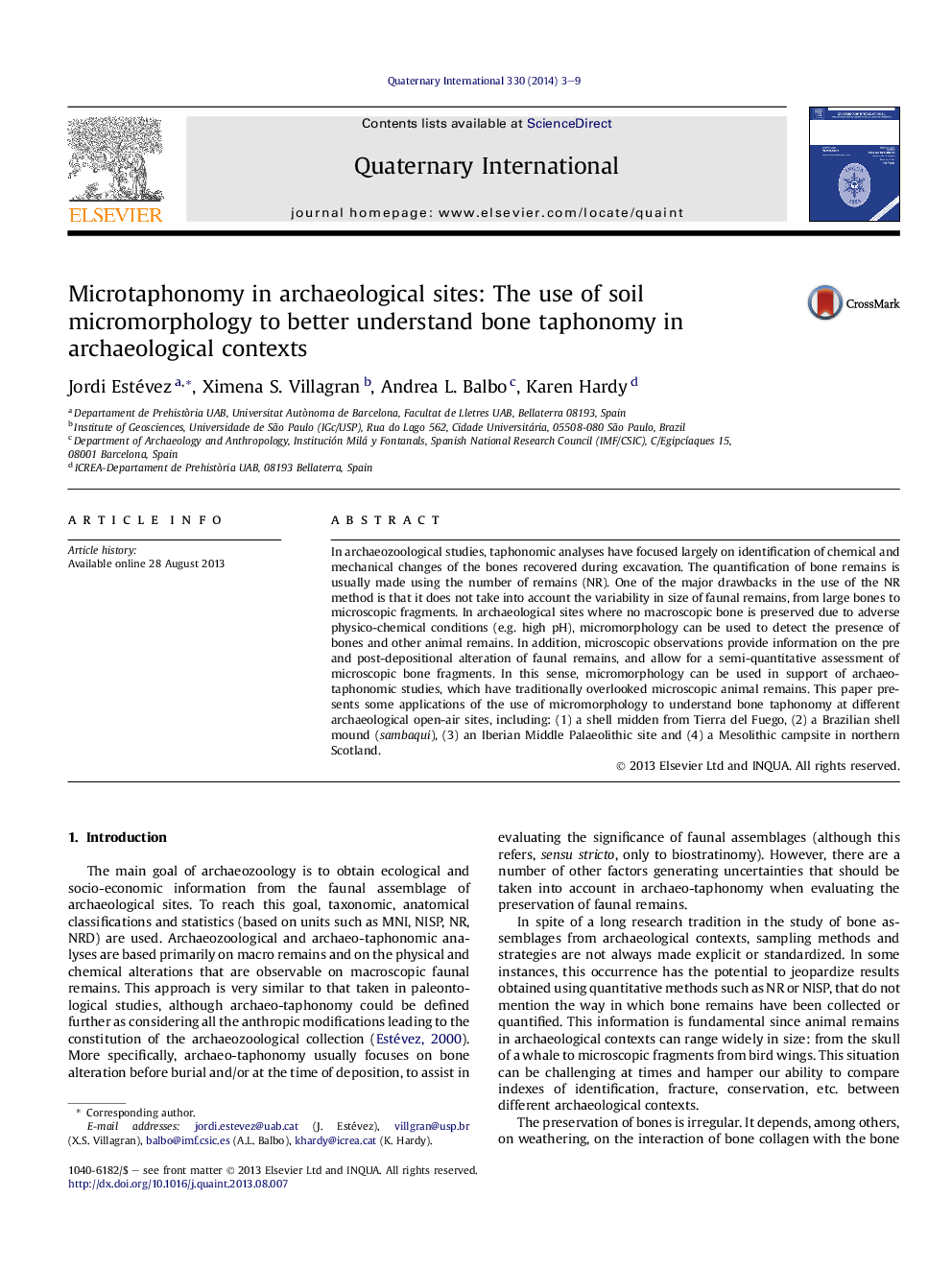| کد مقاله | کد نشریه | سال انتشار | مقاله انگلیسی | نسخه تمام متن |
|---|---|---|---|---|
| 1041824 | 1484164 | 2014 | 7 صفحه PDF | دانلود رایگان |

In archaeozoological studies, taphonomic analyses have focused largely on identification of chemical and mechanical changes of the bones recovered during excavation. The quantification of bone remains is usually made using the number of remains (NR). One of the major drawbacks in the use of the NR method is that it does not take into account the variability in size of faunal remains, from large bones to microscopic fragments. In archaeological sites where no macroscopic bone is preserved due to adverse physico-chemical conditions (e.g. high pH), micromorphology can be used to detect the presence of bones and other animal remains. In addition, microscopic observations provide information on the pre and post-depositional alteration of faunal remains, and allow for a semi-quantitative assessment of microscopic bone fragments. In this sense, micromorphology can be used in support of archaeo-taphonomic studies, which have traditionally overlooked microscopic animal remains. This paper presents some applications of the use of micromorphology to understand bone taphonomy at different archaeological open-air sites, including: (1) a shell midden from Tierra del Fuego, (2) a Brazilian shell mound (sambaqui), (3) an Iberian Middle Palaeolithic site and (4) a Mesolithic campsite in northern Scotland.
Journal: Quaternary International - Volume 330, 30 April 2014, Pages 3–9